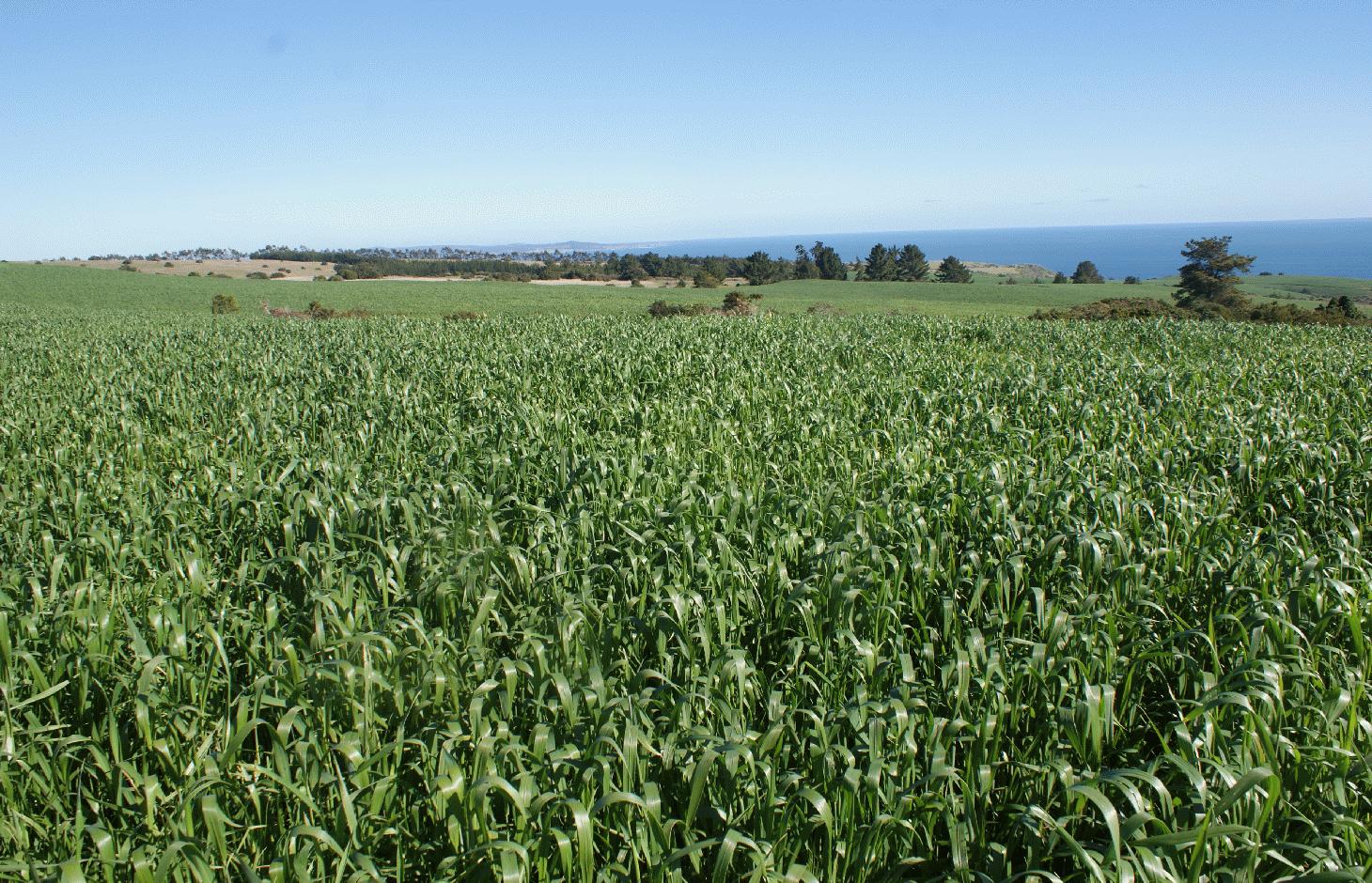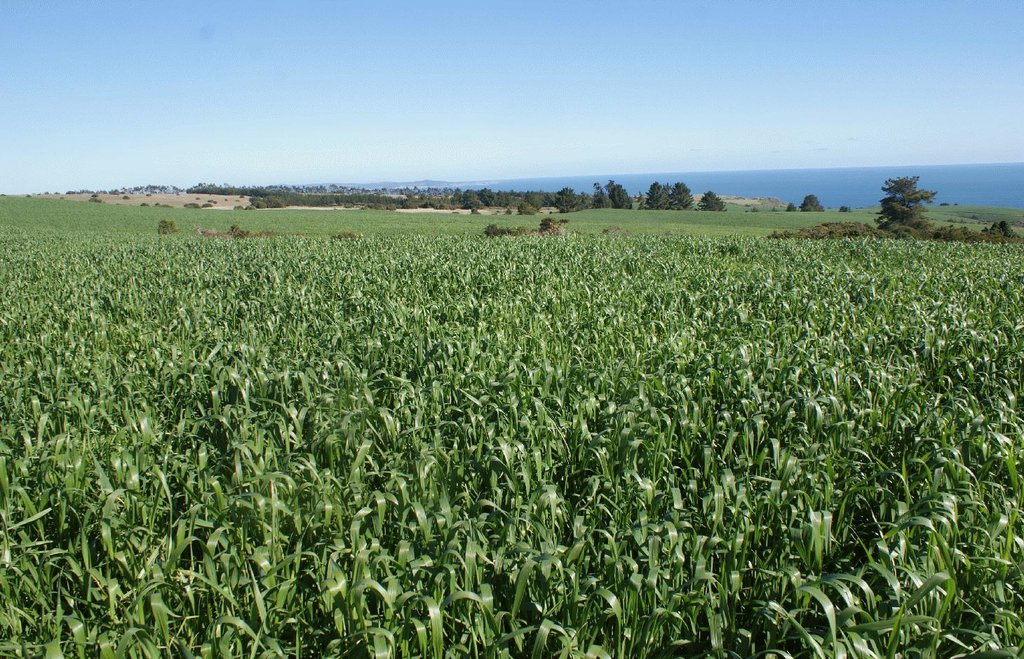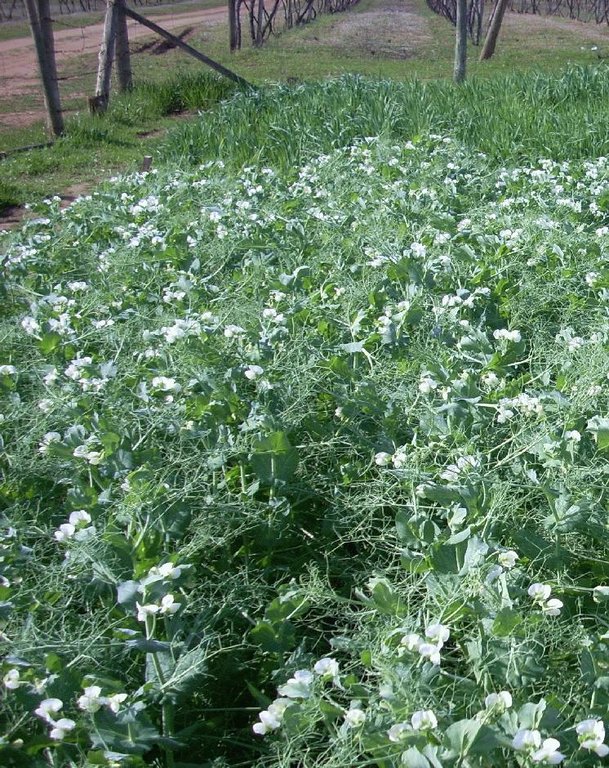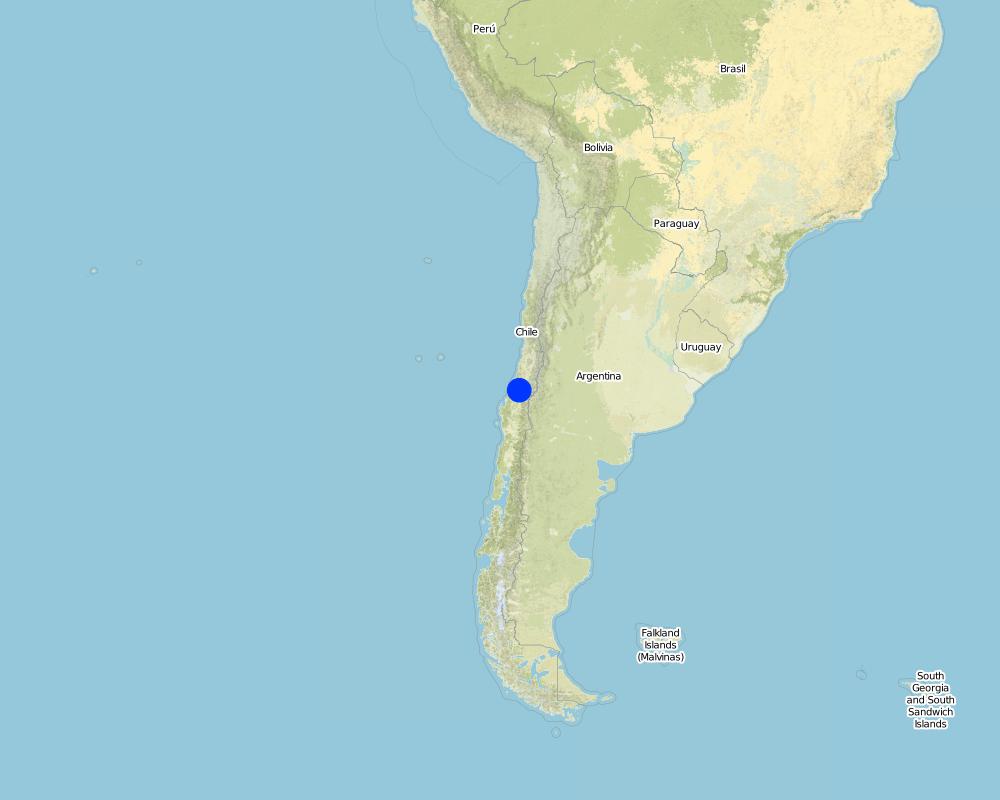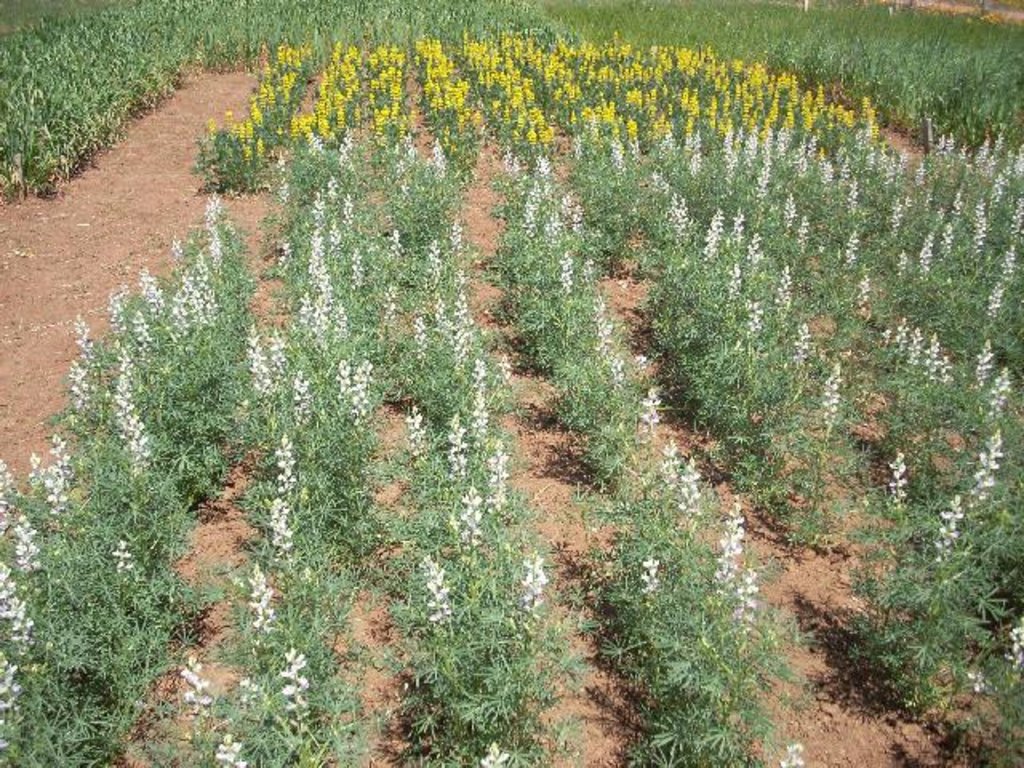Crop rotation with legumes [智利]
- 创建:
- 更新:
- 编制者: Carlos Ovalle
- 编辑者: –
- 审查者: Deborah Niggli, Alexandra Gavilano
Rotación de cultivos con leguminosas (Spanish)
technologies_1123 - 智利
查看章节
全部展开 全部收起1. 一般信息
1.2 参与该技术评估和文件编制的资源人员和机构的联系方式
SLM专业人员:
Soledad Espinoza
Instituto de Investigaciones Agropecuarias
智利
有助于对技术进行记录/评估的项目名称(如相关)
DESIRE (EU-DES!RE)有助于对技术进行记录/评估的机构名称(如相关)
Instituto de Investigaciones Agropecuarias (INIA) (Instituto de Investigaciones Agropecuarias (INIA)) - 智利1.3 关于使用通过WOCAT记录的数据的条件
编制者和关键资源人员接受有关使用通过WOCAT记录数据的条件。:
是
1.5 参考关于SLM方法(使用WOCAT记录的SLM方法)的调查问卷

Dissemination of soil conservation technologies in dryland areas [智利]
Dissemination of no tillage with subsoiling in the Municipality of Yumbel
- 编制者: Carlos Ovalle
2. SLM技术的说明
2.1 技术简介
技术定义:
Biological Nitrogen Fixation (BNF) of legumes as a source of N in crop rotations with cereals in Mediterranean Chile
2.2 技术的详细说明
说明:
In the past, legumes were commonly used as a biological and economic source of N for farming systems. Nowadays, N-fixing legumes have been recovering as viable crops because of the increased cost of N fertilizer and the need to develop more sustainable farming systems.
Purpose of the Technology: These systems combine phases of legumes of different duration, in which N is fixed and accumulates in the soil, followed by phases of cereal growing during which accumulated N is extracted
Establishment / maintenance activities and inputs: In this new rotation for rainfed agricultural systems in Central Chile, four legume-wheat rotations were compared to a monoculture crop rotation (wheat followed by oat). The legume species are: the narrow-leaf lupin (Lupinus angustifolium); Wonga (early-flowering and high-yielding narrow-leafed lupin variety), yellow lupin (Lupinus luteus); Motiv, Peas (Pisum sativum); Rocket and a fodder mixture of vetch (Vicia atropurpurea) with oats. Legume seeds were inoculated with a specific Rhizobium. In the year following the legume crop, wheat was seeded without N fertilisation on the incorporated residues of grain legumes and green manure (vetch with oats). The BNF in the grain legumes varies from 124 to 178 kg N ha-1, depending on the type of legume. Peas are the most efficient fixing legume crop. In the lupins - wheat (L. angustifolius) rotation without application of N to the wheat after lupins, production of wheat was between 79 and 110% of that when fertilised with N. In the peas - wheat rotation, a yield equivalent to 72 and 105% of the wheat fully fertilised with N was obtained. While peas (Pisum sativum) can be eaten as a green vegetable, lupins and Vicia are used as fodder supplements for animals.
Natural / human environment: The new rotations were developed and evaluated experimentally. Then, through a technology transfer programme, the technology was transferred to real conditions with farmers in a programme covering 250 ha in the municipality of Yumbel.
The area has a subhumid Mediterranean climate with an average annual precipitation of 695 mm (80% concentrated in winter), with five months of drought. Soils are Alfisols of the Cauquenes type, classified as Ultic Palexeralfs. The soil is formed from weathered granite with moderately acidic conditions and low organic carbon. Clay content in the soil is 15% at depths of 0-18 cm depth. Below this depth, it is above 44%. The topography comprises a hillslope with a gradient of 10-20 % and the main traditional crop rotation is oat-wheat or wheat-natural pasture. The farmers are smallholders working on their own land. The sizes of the holdings on the dryland soils vary from 5 to 20 ha.
2.3 技术照片
2.5 已应用该技术的、本评估所涵盖的国家/地区/地点
国家:
智利
区域/州/省:
Cauquenes and Bíobio
有关地点的进一步说明:
Secano interior, Mediterranean Chile
具体说明该技术的分布:
- 均匀地分布在一个区域
如果技术均匀分布在一个区域,则指定覆盖的区域(单位为平方千米):
250.0
注释:
Total area covered by the SLM Technology is 250 km2
Map
×2.6 实施日期
如果不知道确切的年份,请说明大概的日期:
- 不到10年前(最近)
2.7 技术介绍
详细说明该技术是如何引入的:
- 在实验/研究期间
- 通过项目/外部干预
3. SLM技术的分类
3.1 该技术的主要目的
- 保护生态系统
3.2 应用该技术的当前土地利用类型

农田
- 一年一作
年作 - 具体指明作物:
- 谷类 - 燕麦
- 豆科牧草和豆类 - 其他
- 豆科牧草和豆类 - 豌豆
- 蔬菜 - 叶菜(色拉、卷心菜、菠菜和其他)
- wheat
具体说明:
Longest growing period in days: 180; Longest growing period from month to month: Mar - Nov
采用轮作制度了吗?:
是
注释:
The legume species are: the narrow-leaf lupin (Lupinus angustifolium); Wonga (early-flowering and high-yielding narrow-leafed lupin variety), yellow lupin (Lupinus luteus); Motiv, Peas (Pisum sativum); Rocket and a fodder mixture of vetch (Vicia atropurpurea) with oats
Major land use problems (compiler’s opinion): In rainfed areas of the Mediterranean region of Chile, bread wheat (Triticum aestivum) is mainly produced in rotation with oats (Avena sativa) and therefore N is obtained from the soil and synthetic N fertilizers applied during sowing and ploughing. These intensive crop rotations have resulted in deterioration of the physical properties and a depletion of soil fertility as a result of the drastic reduction in organic matter content of these soils.
3.5 该技术所属的SLM组
- 轮作制度(轮作、休耕、轮垦)
3.6 包含该技术的可持续土地管理措施

农艺措施
- A1:植被和土壤覆盖层
3.7 该技术强调的主要土地退化类型

化学性土壤退化
- Cn:肥力下降和有机质含量下降(非侵蚀所致)
注释:
Main type of degradation addressed: Cn: fertility decline and reduced organic matter content
Main causes of degradation: soil management, change in temperature, change of seasonal rainfall, Heavy / extreme rainfall (intensity/amounts), education, access to knowledge and support services
3.8 防止、减少或恢复土地退化
具体数量名该技术与土地退化有关的目标:
- 防止土地退化
- 减少土地退化
4. 技术规范、实施活动、投入和成本
4.1 该技术的技术图纸
技术规范(与技术图纸相关):
Lupins forming part of the crop sequence (Lupinus angustifolium)
Technical knowledge required for land users: high
Main technical functions: increase in organic matter, increase in nutrient availability (supply, recycling,…), promotion of new crops and varieties
Secondary technical functions: improvement of ground cover
作者:
Soledad Espinoza
4.2 有关投入和成本计算的一般信息
具体说明成本计算所用货币:
- 美元
4.5 维护/经常性活动
| 活动 | 时间/频率 | |
|---|---|---|
| 1. | Seeding legumes | |
| 2. | Application of fertilizer | |
| 3. | Harvesting with special machinery |
4.6 维护/经常性活动所需要的费用和投入(每年)
| 对投入进行具体说明 | 单位 | 数量 | 单位成本 | 每项投入的总成本 | 土地使用者承担的成本% | |
|---|---|---|---|---|---|---|
| 劳动力 | Seed, fertilize and harvest | ha | 1.0 | 146.0 | 146.0 | 100.0 |
| 设备 | Rent seeder machine+harvesting | ha | 1.0 | 293.0 | 293.0 | 60.0 |
| 植物材料 | Seeds | ha | 1.0 | 306.0 | 306.0 | 80.0 |
| 技术维护所需总成本 | 745.0 | |||||
| 技术维护总成本,美元 | 745.0 | |||||
4.7 影响成本的最重要因素
描述影响成本的最决定性因素:
There are not establishment inputs and costs because in annual crops all the cost are recurrent
5. 自然和人文环境
5.1 气候
年降雨量
- < 250毫米
- 251-500毫米
- 501-750毫米
- 751-1,000毫米
- 1,001-1,500毫米
- 1,501-2,000毫米
- 2,001-3,000毫米
- 3,001-4,000毫米
- > 4,000毫米
农业气候带
- 半湿润
Thermal climate class: temperate
5.2 地形
平均坡度:
- 水平(0-2%)
- 缓降(3-5%)
- 平缓(6-10%)
- 滚坡(11-15%)
- 崎岖(16-30%)
- 陡峭(31-60%)
- 非常陡峭(>60%)
地形:
- 高原/平原
- 山脊
- 山坡
- 山地斜坡
- 麓坡
- 谷底
垂直分布带:
- 0-100 m a.s.l.
- 101-500 m a.s.l.
- 501-1,000 m a.s.l.
- 1,001-1,500 m a.s.l.
- 1,501-2,000 m a.s.l.
- 2,001-2,500 m a.s.l.
- 2,501-3,000 m a.s.l.
- 3,001-4,000 m a.s.l.
- > 4,000 m a.s.l.
关于地形的注释和进一步规范:
Slopes on average: Also hilly
5.3 土壤
平均土层深度:
- 非常浅(0-20厘米)
- 浅(21-50厘米)
- 中等深度(51-80厘米)
- 深(81-120厘米)
- 非常深(> 120厘米)
土壤质地(表土):
- 细粒/重质(粘土)
表土有机质:
- 低(<1%)
如有可能,附上完整的土壤描述或具体说明可用的信息,例如土壤类型、土壤酸碱度、阳离子交换能力、氮、盐度等。:
Soil fertility is very low
Soil drainage / infiltration is poor
Soil water storage capacity is very low
5.4 水资源可用性和质量
地下水位表:
5-50米
地表水的可用性:
匮乏/没有
水质(未处理):
良好饮用水
5.5 生物多样性
物种多样性:
- 低
5.6 应用该技术的土地使用者的特征
生产系统的市场定位:
- 混合(生计/商业)
非农收入:
- > 收入的50%
相对财富水平:
- 贫瘠
个人或集体:
- 个人/家庭
性别:
- 男人
说明土地使用者的其他有关特征:
Population density: 10-50 persons/km2
Annual population growth: < 0.5%
80% of the land users are poor and own 60% of the land.
5.7 应用该技术的土地使用者使用的平均土地面积
- < 0.5 公顷
- 0.5-1 公顷
- 1-2 公顷
- 2-5公顷
- 5-15公顷
- 15-50公顷
- 50-100公顷
- 100-500公顷
- 500-1,000公顷
- 1,000-10,000公顷
- > 10,000公顷
5.8 土地所有权、土地使用权和水使用权
土地所有权:
- 个人,未命名
土地使用权:
- 个人
用水权:
- 个人
5.9 进入服务和基础设施的通道
健康:
- 贫瘠
- 适度的
- 好
技术援助:
- 贫瘠
- 适度的
- 好
就业(例如非农):
- 贫瘠
- 适度的
- 好
能源:
- 贫瘠
- 适度的
- 好
道路和交通:
- 贫瘠
- 适度的
- 好
饮用水和卫生设施:
- 贫瘠
- 适度的
- 好
6. 影响和结论性说明
6.1 该技术的现场影响
社会经济效应
生产
作物生产
饲料生产
饲料质量
生产故障风险
产品多样性
收入和成本
农业收入
收入来源的多样性
工作量
社会文化影响
食品安全/自给自足
健康状况
SLM/土地退化知识
livelihood and human well-being
生态影响
土壤
土壤覆盖层
土壤流失
土壤结壳/密封
养分循环/补给
土壤有机物/地下C
生物多样性:植被、动物
生物量/地上C
其它生态影响
hazard towards adverse events
6.2 该技术的场外影响已经显现
水资源可用性
surface runoff
6.3 技术对渐变气候以及与气候相关的极端情况/灾害的暴露和敏感性(土地使用者认为的极端情况/灾害)
渐变气候
渐变气候
| 季节 | 增加或减少 | 该技术是如何应对的? | |
|---|---|---|---|
| 年温度 | 增加 | 好 |
气候有关的极端情况(灾害)
气候灾害
| 该技术是如何应对的? | |
|---|---|
| 干旱 | 不好 |
注释:
This technology should be complemented with no tillage and subsoiling of the soil (see QT CHL01).
6.4 成本效益分析
技术收益与技术建立成本相比如何(从土地使用者的角度看)?
短期回报:
积极
长期回报:
积极
技术收益与技术维护成本/经常性成本相比如何(从土地使用者的角度看)?
短期回报:
积极
长期回报:
积极
6.5 技术采用
注释:
Comments on acceptance with external material support: This is a new approach to the cereal production system in rainfed areas. Initially the adoption has been slow, as the results obtained in the project are recent.
Comments on adoption trend: . Hence it is expected that in the future the adoption of this technology increases up to 20,000 ha in the “secano interior” of south-central Chile
6.7 该技术的优点/长处/机会
| 编制者或其他关键资源人员认为的长处/优势/机会 |
|---|
|
Reduces the costs of fertiliser: the incorporation of legumes in the rotation cycle means a saving of 30% of nitrogen fertilizer in cereal production costs How can they be sustained / enhanced? keep the phases of legumes sufficiently frequent and long |
| Increases the economic benefits. When analysing the whole farming system, replacing the traditional rotation of wheat followed by natural pasture, implies two economic benefits for the producer: increasing the income by the incorporation of a new crop (legumes) and the reduction of costs in the fertilization of cereals. |
|
Increase soil organic matter: the new rotation system means a new concept in the management of crop residues. These should be incorporated into the soil, which in the medium and long term will involve an increase in the soil organic matter content How can they be sustained / enhanced? ensure application of the new management of crop residues |
| The new rotation system involves an increase in productivity of the land, as it incorporates new cultures and improves the physical and chemical conditions of the soils. |
6.8 技术的弱点/缺点/风险及其克服方法
| 编制者或其他关键资源人员认为的弱点/缺点/风险 | 如何克服它们? |
|---|---|
| Necessity of more training for the farmers | improve / enhance agricultural extension |
7. 参考和链接
7.1 信息的方法/来源
7.2 参考可用出版物
标题、作者、年份、ISBN:
Espinoza, S., Ovalle, C., del Pozo, A., Zagal, E., Urquiaga, S. 2011. Biological Fixation of N2 in mono and polyspecific legume pasture in the humid Mediterranean zone of Chile. Chilean Journal of Agricultural Research. 71(1):132-139.
链接和模块
全部展开 全部收起链接

Dissemination of soil conservation technologies in dryland areas [智利]
Dissemination of no tillage with subsoiling in the Municipality of Yumbel
- 编制者: Carlos Ovalle
模块
无模块


